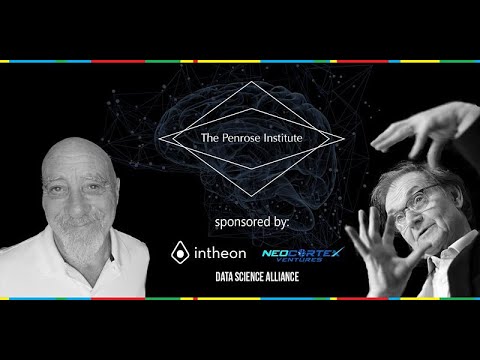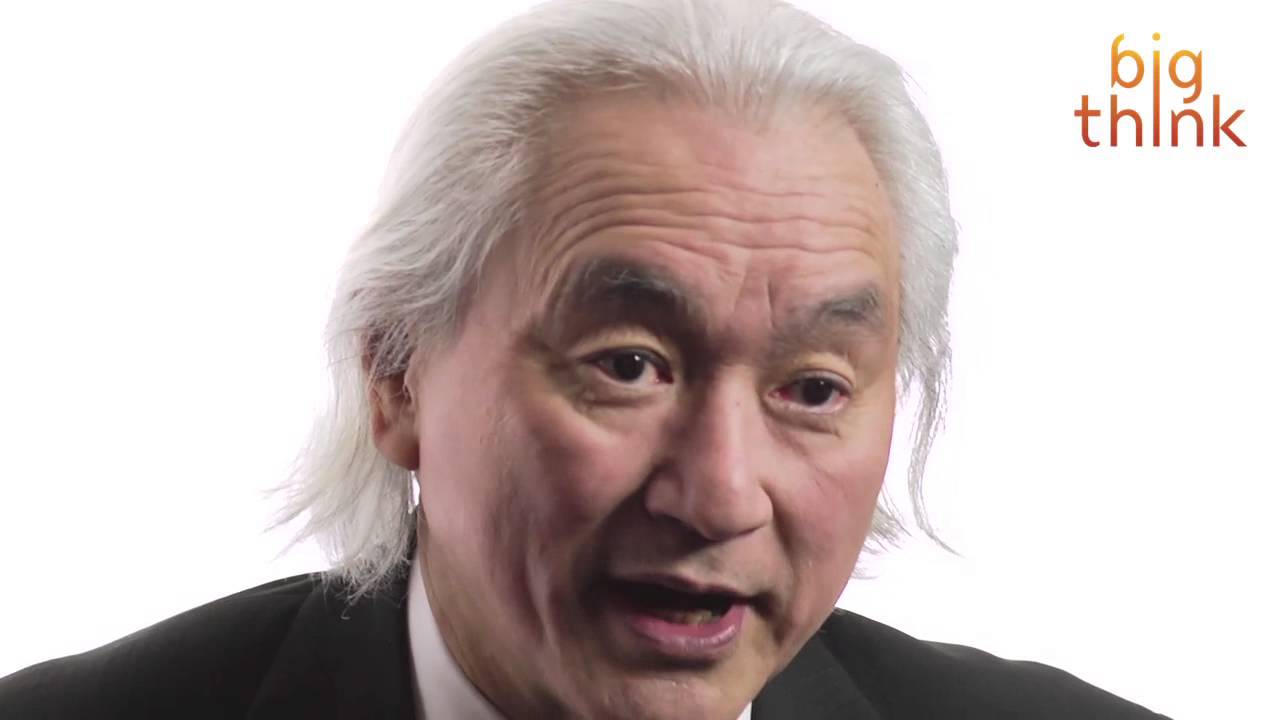Calit2ube
January 10, 2020
Roth Auditorium – Sanford Consortium for Regenerative Medicine
La Jolla, CA
An intimate lecture with renowned mathematical physicist Sir Roger Penrose and anesthesiologist Dr. Stuart Hameroff, followed by a conversation with The Science Network co-founder Roger Bingham. Co-organized by The Penrose Institute and the UC San Diego Institute for Neural Computation.
Sir Roger Penrose and Dr. Stuart Hameroff discuss one of the leading theories of consciousness recently selected by the Templeton Foundation for study.
Is the brain a sophisticated computer or an intuitive thinking device? Following on from their conference in Tucson which pitted Integrated Information Theory (IIT) against Orchestrated Objective Reduction (Orch-OR), Sir Roger Penrose OM and Stuart Hameroff discuss the current state of theories that might explain human consciousness.
Sir Roger Penrose describe examples of ‘non-computability’ in human consciousness, thoughts and actions such as the way we evaluate particular chess positions which cast doubt on ‘Turing’ computation as a complete explanation of brain function. As a source of non-computability, Roger discuss his ‘objective reduction’ (‘OR’) self-collapse of the quantum wavefunction which is a potential resolution for the ‘measurement problem’ in quantum mechanics, and a mechanism for non-computable physics.
Dr. Stuart Hameroff reviews neuronal and biophysical aspects of Orch OR, in which ‘orchestrated’ quantum vibrations occur among entangled brain microtubules and evolve toward Orch OR threshold and consciousness. The nature, feasibility, decoherence times and evidence for quantum vibrations in microtubules, their role and correlation with consciousness, effects upon them of anesthetic gases and psychedelic drug molecules will be discussed, along with Orch OR criticisms and predictions of microtubule quantum vibrations as therapeutic targets for mental and cognitive disorders.
Biography: Sir Roger Penrose OM FRS, Emeritus Professor at the Mathematical Institute of the University of Oxford, Emeritus Fellow at Wadham College, and winner of the Wolf Prize in Physics, has made profound contributions across a broad range of scientific disciplines. His work encompasses geometry, black hole singularities, the unification of quantum mechanics and gravity, the structure of space-time, and the origin of our Universe. His geometric creations inspired the works of Escher, and the Penrose steps have been featured in several movies. His tilings adorn many public buildings, including the Oxford Mathematics Institute, and will soon decorate the San Francisco Transbay Terminal. The five-fold symmetry, initially thought impossible or a mathematical curiosity, has now been found in nature. In 1989 Penrose wrote The Emperor’s New Mind which challenged the premise that consciousness is computation and proposes we need new physics to understand it.
Biography: Stuart Hameroff MD is an anesthesiologist at the University of Arizona in Tucson. In the mid 1990s Hameroff teamed with famed British physicist Sir Roger Penrose to develop a quantum theory of consciousness (‘orchestrated objective reduction’, ‘Orch OR’) based on microtubule quantum computing. Highly controversial and harshly criticized, Orch OR is now supported by evidence, e.g. that anesthetics act in quantum channels in microtubules, and that microtubules have multi-scalar resonances, e.g. in megahertz. He and anesthesiology colleagues performed and published the first clinical trial of transcranial ultrasound (‘TUS’) on mental states in human volunteers, showing mood enhancement from brief, low intensity TUS. Beginning in 1994 Hameroff was the lead in starting an interdisciplinary, international conference series ‘Toward a Science of Consciousness’ held in even-numbered years in Tucson, and odd-numbered years elsewhere around the world. Hameroff has written or edited 5 books, over a hundred scientific articles and book chapters, lectured around the world, and appeared in the film ‘WhattheBleep?’ and numerous TV shows about consciousness on BBC, PBS, Discovery, OWN and History Channel.
Biography: Roger Bingham is the Cofounder and Director of The Science Network (http://thesciencenetwork.org/) and a member of the Computational Neurobiology Laboratory at the Salk Institute and the Institute for Neural Computation, UC San Diego. He is the co-author of The Origin of Minds: Evolution, Uniqueness, and the New Science of the Self, and the creator and host of Emmy award-winning PBS science programs on evolutionary psychology and cognitive neuroscience, including the critically acclaimed series The Human Quest. He is the Founding Director of the Collaboratory, a Center within INC, which is developing a Science In Society program of public and student engagement to explore and bridge the chasm between the creators and consumers of science and technology.
Source




conciousness could be a mistake, we have so much sensory imput to process, not only from the outside world, but internally as well, that or brains just got wired up in such a way that consciousness came about by accident, it's not "evolved", ie become more sophisticated to deal with ever more complex situations, but it's crossed wires, like the giraffe and the nerve in it's neck. or something – lol. consciouness is so unreliable, it may just be a by product of the mechanism we have for visualising information, a kind of "eyes" for the brain, a way of representing the universe. for instance, colour does not exist outside of our brains, the universe is grey, the wavelengths of light are broken down by our brain and colourised to make processing visual input more sensible, perhaps consciousness is a construct to enable us to make sense of all the input we get from the outside world. or something, again, lol.
There's one thing I'm sure of, Sir Roger Penrose exceeds my mental capacity, and his theories are also sound from a quantum mechanics/physics viewpoint.
Dear Rodger Penrose you are SO lovable!!!🍺🤩🥰
I hope Penrose lives many years more, he is a gift for humanity 🙂
Penrose 💓
The question is 'Does Stuart know Trump?' If he does Trump might know what real human consciousness is.
Our physics consists of atoms. The physics we need is meta-physics, where atoms do not play a part.
If one day computers are built by electronics functioning based on biological brains, then there is a new market to make money for Trump.
This new physics explained is the new market, Trump can't wait to pay anyone discovering the new conscious computer.
For the time being, Trump is completely subconscious, dreaming.
All life simulate consciousness as a result of QC function.
This is such a big deal.
I can fill in some missing bits in their lecture. Consciousness has different layers and is in a different dimension. Each layer has a different function in our life.
These layers also have different "frequencies". Some are extremely slow, and are related to sleep. They are like different layers of a mash network. And with psychiatric disorders and more, these are damaged. I help people with such problems, and it works well.
But for science it would be interesting how these frequencies are exactly related to the brain. Are they affecting the frequencies in QM states. Or are they affecting electromagnetic states? Or is it a spacial/time change?
Source: http://www.reddit,com/r/paradigmchange/
As an alternative for QM, I also have to list the NULL-hypothesis:
https://saidit.net/s/Physics/comments/18rz/nullhypothesis_quantum_mechanics_shows_that_there/
This means that there are not really particles, but something else, more field-like.
Hameroff's anesthesia model is false. Lipid phase shift confirmed recently.
Studies on the mechanism of general anesthesia
https://www.pnas.org/content/early/2020/05/27/2004259117
Anesthesia’s effect on consciousness solved, settling century-old scientific debate
https://neurosciencenews.com/anesthesia-consciousness-16471/
Brain Cells Communicate with Mechanical Pulses, Not Electric Signals
https://www.scientificamerican.com/article/brain-cells-communicate-with-mechanical-pulses-not-electric-signals/
https://science.nichd.nih.gov/confluence/download/attachments/117212433/Brain_Cells_Communicate_with_Mechanical_Pulses_-_Fox_2018.pdf
On Soliton Propagation in Biomembranes and Nerves.
http://www.pnas.org/content/pnas/102/28/9790.full.pdf
psychedelics are the bridge to the quantum network and they need to be measured better as they'll reveal the secrets of time, space, and energy. Phenomena described by science about the quantum state can be observed with your eyes under these states and if a computer recorded the phenomena and measured them against the changes happening in real time and space they would start to understand what many mathematicians have been trying to describe with numbers for centuries. quantum gateways at different resonances and abilities to communicate instantly with any other particle in the universe simultaneously without having to travel through time and space as the coupling is a web of energy that is present since the big bang and bridges all matter.
Interesting as it all was, it felt like going deeply into the chemical structure and compound of each brushstroke in Van Gogh's Starry Night (to use an analogy). The analysis only amplifies the mysterious relationship, if any, between the chemical structure and the majesty of the painting as experienced by the art lover. In some sense, the constellations of the chemical structures are necessary to the painting's existence, but the analysis says nothing about the experience of that picture, or the various possible feelings/emotions/associations /meanings the painting evokes. There's still no clear connection between chemical composition/structure AND meaning, or how meanings are generated. (The "WHEN such-and-such is/are present" should not be conflated with a HOW.) How is it that Van Gogh's painting has moved and inspired many people? Can you explain that in terms of the colors' chemical constituents? Moreover, while the painting is awesome, a detailed analysis of its colors' chemical structure is rather dry, tedious, and over-technical by comparison. These guys did a fantastic job – but the fruit of their analysis, while clarifying some things, deepens the mystery of consciousness at the same time.
so the new science we need is vibrational energy……..the hippies where right all along lol
interesting because recently ive been using vibrations to treat the throbbing in my knee from arthritis and inflamation. It works as in the throbbing stops leaving just a small ache which then the ache disappears for a while. So once twice a day i give it some vibrations and dont take pain killers.
love his wee colourful titles
im watching this just to watch it… i havent got a clue what hes on about. interesting though. kind of
This is what prime time network television should look like.
These guys are awesome. I bet it'd be great to research with them
Put BLOTTER on your face & trip out in the interwebs! Please share my website